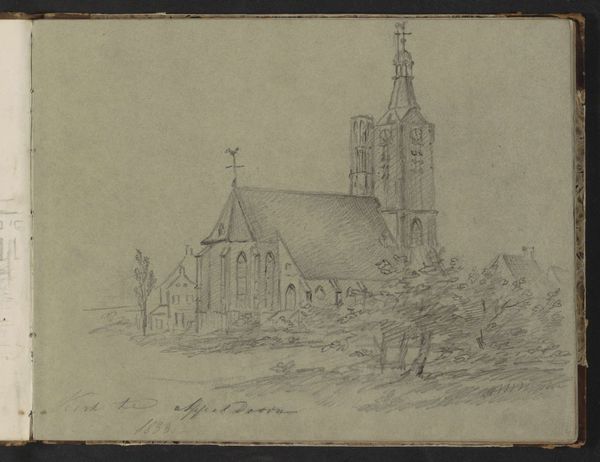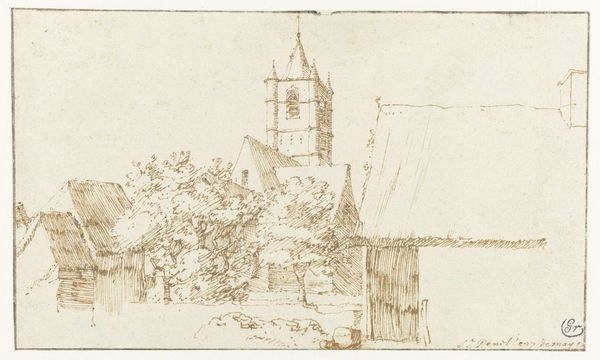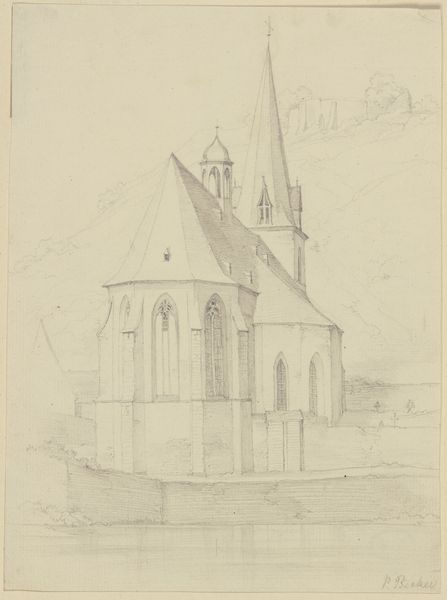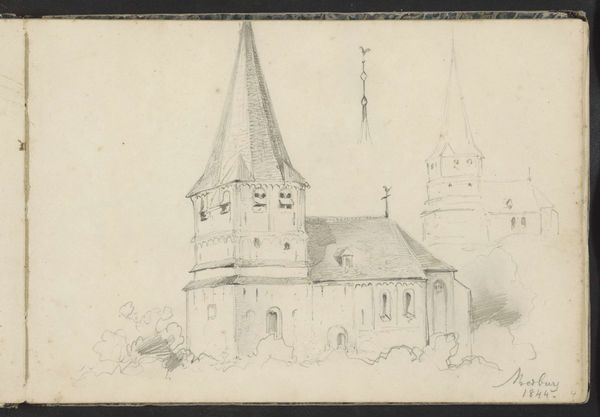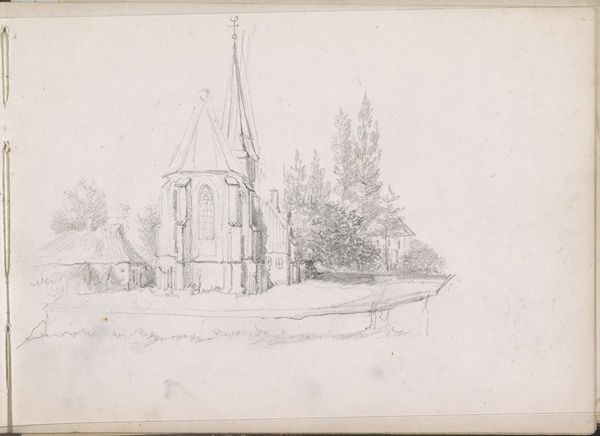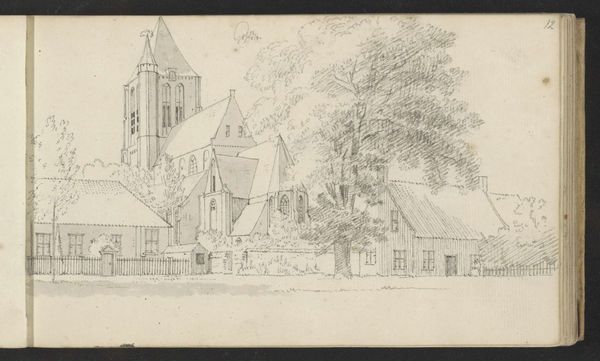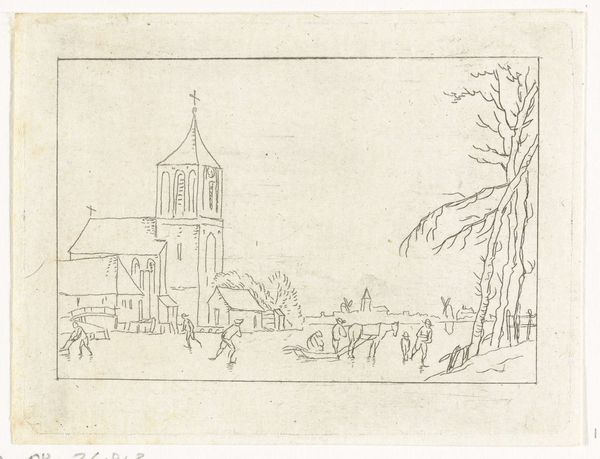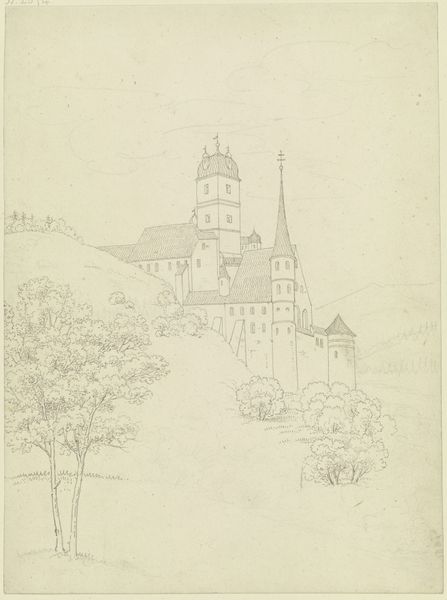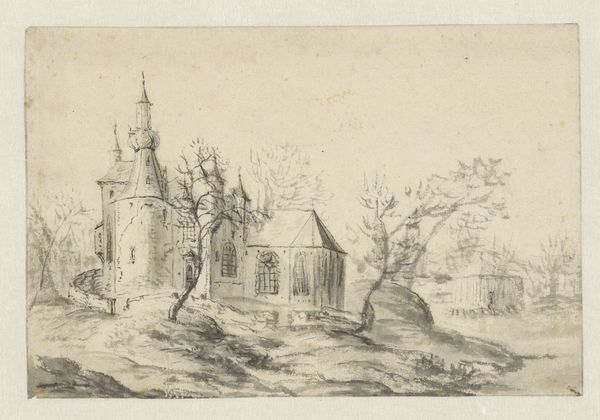
Dimensions: height 210 mm, width 275 mm
Copyright: Rijks Museum: Open Domain
Curator: Gerrit Postma's "Église Saint-Béat te Épône," created in 1858, presents us with a delicately rendered church using pencil on paper. It’s currently held here at the Rijksmuseum. Editor: The drawing gives me a distinct feeling of tranquility, almost like a fleeting moment captured in time. There's something very gentle about the hatching and the composition that feels approachable. Curator: Indeed, Postma's material choice certainly enhances that feeling. Pencil on paper emphasizes the handmade quality of the piece. Given that this was created in the mid-19th century, the availability and relative affordability of these materials would have enabled artists like Postma to capture the world around them efficiently, making art accessible to a wider audience through sketches and studies. Editor: Absolutely. Thinking about the social context, religious institutions played a key role in communities during the 19th century. Postma may be offering more than a rendering of stone. Is he hinting at stability, faith, and perhaps even the embedded hierarchies within village life at the time? The vantage point even positions the viewer slightly below the church. Curator: The architecture itself offers further insight. Note the deliberate rendering of texture—you can almost feel the rough surface of the stone despite the medium being graphite. The precision is important too. It points to an investment of labor, as it’s an endorsement of craftsmanship valued by the art market of the time. There is both attention to detail and subtle deviation from the source material through sketching style. Editor: From my viewpoint, the symbolism within this piece goes beyond the materials themselves. Consider the centrality of the cross, repeated in both structures—how faith intersects the domestic and public realms of life and dictates the visual narrative that an artist builds to both reveal and conceal cultural contexts. The way Postma captures this ordinary moment is not only about that moment, but about who the cultural practices in the area involve or leave behind. Curator: Ultimately, Postma's drawing, in its detailed precision with accessible materials, grants us insight into artistic practices of the mid-19th century, the economics of art creation and their product. Editor: And its representation and its broader historical context offer a point of reflection about community, beliefs, and identity that can provide opportunities for current dialogue about their legacies today.
Comments
No comments
Be the first to comment and join the conversation on the ultimate creative platform.

